人教版新目标初中英语七年级上册Do you have a soccer ball教案
-
- 页数:15页
- 字数:约 14486 字
- 大小:88.00KB
- 格式:.doc
- 版本:Office2016及以上版本
- 作者:yuuta设计
Do you have a soccer ball教案
教学内容
在这一单元中,学生要学会就有关人与物之间所属关系进行问答的句子。本单元大量引入有关运动的名词,要求学生彼此询问有无此类物品,并做出相应的回答。同时学习表示建议的句型Let’s运动的形容词。
本单元所选用的话题来自学生所喜欢的生活片段,在教学中生生交流、师生交流会更融洽,会促进师生彼此间的了解,成功的教学还会让部分学生养成良好的运动习惯和收藏习惯。
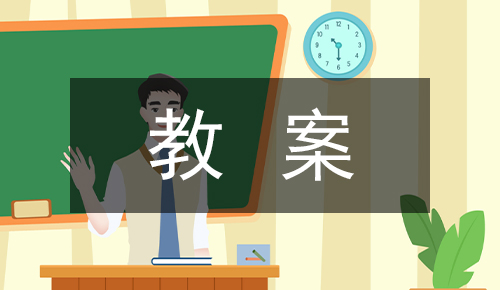
教学目标
1)语言知识:A.在询问对方是否有某物的对话中学会使用do和does引导的一般疑问句;
B. 学会使用描述性的形容词来评价事物;
C. 学会在对话中使用名词复数;
D. 学会用祈使句来向对方提出建议.
2) 语言技能:A. 学会用祈使句询问某人是否有某物;
B. 学会向他人提出建议的句子.
3) 学习策略:A.通过与同学讨论,做出猜测;
B.对所学的知识进行分类.
4) 情感态度:A. 在本单元中,通过阅读有关运动的文章和对话,使学生更加热爱体育活动并培养一种适合自己的体育爱好;
B.在小组活动中,培养学生团结协作精神.
教学重点、难点
重点:A.学会就有关人与物之间所属关系进行问答的句子;
B.学习并掌握Let’s…句型.
难点:A.学会使用描述性形容词对事物做出评价,如difficult/relaxing/collection/television 等;
B.学会使用第三人称单数的一般疑问句及回答做对话.
课时安排
第一课时 SectionA 1a-1c
第二课时 SectionA 2a-4
第三课时 SectionB 1a-2c
第四课时 SectionB 3a-4
Period One
课前准备
教师:准备表格、铅笔、格尺或橡皮。
学生:调查。
教学设计
Step One:Learn the new words.
1.Present the key vocabulary.
(Show a basketball to the class.)
T: What’s this in English?
S1: It’s a basketball.
T: Yes,you are right. Read after me.B-A-S-K-E-T-A-B-L-L,basketball.
Ss: B-A-S-K-E-T-A-B-L-L,basketball.
(Show the students other objects. Teach thenew words “tennis racket,ping-pong ball,volleyball,basketball” in the same way.And then show students the picture of television and teach it.)
T: Read the words together twice.
Ss: …
T: Ask and answer in pairs with thesethings. Use the drill “What’s this in English?” and “Where is the..?”
2.Look at the words in 1a and match thewords with the things in the picture.
T: Number 1 is (c ) ,tennis racket. What’sNumber 2 Match them.
3.Ask one student to show the answers andcheck them.
Step Tw Present the structures.
1.Present these questions and answers.
(Point to a student who has a pen or apencil case.)
T: Do you have a pencil case?
S1:Yes, I do. (Nod your head yes)
T: Do you have a computer game?
S1: No, I don’t. (Shake your head no)
2.Practice the drill “Do you have a …?” inpairs. You can use your school things and these balls.Look at the model, thenpractice like this.
Model:
Sa: Do you have a backpack?
Sb: Yes, I do. Do you have a soccer ball?
Sa: No, I don’t. I have a volleyball.
(Students work in pairs.)
Step Three: Listening practice.
T: Look at the four items of 1b in thepictures. Listen to the conversation.
(Play the recording of 1b the firsttime.Students only listen.)
T: Listen to the conversation and circle thewords you hear.
(Play the recording again.)
T: Check their answers.
S:…
Step Four: Practice the conversations.
1.Read the conversations in 1c.
(Ask students to repeat.)
2.Look at the picture in 1a and practice theconversation with each other in pairs.
S1:Do you have…?
S2:Yes, I do.
S1:Do you have a …?
S2:No, I don’t.
3.Work in groups of four and use the pictureto practice the similar conversations with the newwords.(television,basketball, baseball bat, soccer ball, volleyball,television)
T:Ask and answer the questions as many asyou can.
S1:Do you have a … ?
S2: …
S1: …
S2: …
Step Five: Task.
T: Make a survey about “ What kind of ballsdo the students have?” We want to have a ball game. But we don’t know what kindof balls you have. Please ask your classmates in the group what balls he/ shehas. Then write down the information in the chart.
1.Fill in the chart using the structure andmodels on the screen.
Names
Do you have…?
Balls you have
1
2
3
4
5
Structures:Do you have a …? Yes, I do./ No,I don’t.
What balls do you have?
I have a …
Example:
S1: Do you have a tennis racket, Tom?
S2: No, I don’t.
S1: What balls do you have?
S2: I have basketball and football.
S1: What about you?
S3: …
2.Choose one student from each group toreport about his or her group.
Report like this:She or he likes… One ofthem has a … But two of them have…
Step Six: Homework.
Make a survey about your parents’ collection.
Name
collection
Mother
father
Do you have a soccerball ?
Period Two
课前准备
教师:设计表格,准备录音机及多媒体课件。
学生:准备卧室照片。
教学设计
Step One:Warming up.
1.Present the new structures.
T: Do you have a tennis racket?
S1:Yes, I do.
T: Do you have a baseball bat?
S2:No, I don’t.
T: Does she have a tennis racket?
(Point to the first student)
S3:Yes, she does.
T:Does he have a baseball bat?
(Pint to the second student)
S4:No,he doesn’t.
2.Practice the drill.
T:Practice in groups of four. The first twostudents must use the drill “Do you have a …?” The other two students ask andanswer according to their conversation and use the drill “Does he/ she have a…?”
S1:Do you have a …?
S2:Yes, I do. Do you have a …?
S1:No, I don’t.
S3:Does she have a …?
S4:Yes, she does. Does he have a …?
S3:No, he doesn’t.
Step Tw Listening.
T:Look at the pictures in 2b and name them.What are these?
(Point at the baseball,basketball,volleyball,football.)
Ss:They are…
T:There are four children in theconversations. Who are they? Please listen and find the answer.
(Play the recorder for the first time.)
S:…
T:I’ll play the recorder for the secondtime. Listen and number the pictures(1-4).
(Students listen for the second time.)
T:Listen to the conversation in 2b. Matchthe people with the balls.
(Students listen and match. Teacher checkstheir answer.)
Step Three: Practice the structure: Do youhave a …? Yes, I do. / No, I don’t.
T:Now, Please look at the picture in 2c inyour book. Suppose this is your partner’s room. Ask your partner “ Do you havea …?”
(Show a photo of the teacher.)
Sa:Do you have a …?
Sb:Yes, I do./ No, I don’t.
T: This is my room.Ask your partner somequestions about it . Make the same conversation like this.
Model:
T:Let’s look at the teacher’s room. Doesshe/ he have a football?
S1:Yes, she/he does.Does she/ he have aping-pong?
T:No,she/he doesn’t.
(Ask more students to make a conversation.)
T:Make a long conversation with things inthe picture.
S:…
T:Take out your pictures and change eachother.Please talk about it.
S:…
Step Four: Learn how to make suggestions.
1. Present the new word:Let’s …
(Show a football toclass.)
T:Let’s play football after class,OK?
S1:OK.
T:Let’s play ping-pong.
S2:OK.
T:We often use the drill “Let’s…” to make asuggestion.If you want to do it,you may say “OK./ That sounds good./ All right…” If you don’t want to do it, you may say “No, I don’t have a …”
(The teacher writes the drill on thebackboard.)
A:Let’s play…
B:No, I don’t have a …
A:Well, let’s play baseball.
B:That sounds good.
T:“That sounds good”means “That is a goodidea or That would be fun”.
2.Do 3a.
(The teacher reads the cartoon story in 3afor students,saying blank each time you come to an empty write-online.
T:I’ll ask a student to read the four wordsto the class.
S:…
T:Fill in the blanks with the words from thebox.
(Students work alone as they write the fourwords from the box in the correct banks.)
T:Check the answers.
S:..
Step Five: Practice the structure: Let’s…
1. Explaining.
T:Look at the three pictures in 3b and namethe things in it.
S:…
T:What does the mark on the basketball inPicture One mean?
The mark means“don’t” or “no” and means “do it”.
T:Who read the conversation in pairs?
S:…
2.Pairwork.
T:Make conversations with your partneraccording to the picture.
Sa:Let’s play baseball.
Sb:I don’t have a …
Sa:Well,let’s play…
Sb:…
Step Six:Task.
Join the School Sport Center.
T:Look at the ad. On the screen. What sportsdo you like to play? Who are your favorite sportsmen and sports women? Whatsports do you play at the school? Our school has a Sports Center with all thesports that you would like to play.
Welcome to our Sports Center.
Do you like sports? We have many
Clubs: volleyball, basketball, ping-pongand more. Join us.
1. Read the ad.and fill in the chart.
2. Read the ad.for students and ask them torepeat the new words.
3. Ask students to choose one club and fillin the form.
4. Make a conversation with one studentusing the form.
Structures:
What’s your first name?
What’s your last name?
What sports do you like?
Do you like…?
What class are you in ?
How old are you ?
Application(申请)
First name
Last name
Age
Sex
Class
Club
For example:
S1:What’s your first name?
S2:My name is…
S1:What’s your last name?
S2:My last name is…
S1:What sports do you like?
S2:I like basketball.
S1:Who is the sport star you like?
S2:Yao Ming.
S1:Do you like baseball?
S2:No,I don’t.
S1:OK, you can join our basket club. Welcomeyou.
5. Change the partner and make anotherconversation.
Structures:
What sports does he like?
Does he / she like…?
Doyou have a soccer ball ?
Period Three
课前准备
教师:准备表格,录音机。
学生:准备调查。
教学设计
Step One: Warming up.
1.Present the structure of last lesson.
(show a volleyball to a student)
T:Let’s make a conversation about your sportyou like. Do you like volleyball?
S1:Yes, I like it very much.
(Show a baseball to him or her.)
T:What about baseball?
S1:No, I don’t. I don’t like it .
T:OK.Let’s play volleyball after class.
S1:Great.
2.Work in pairs and make a similarconversation like this.
Step Tw Learn the new words.
1.Read the words in 1a.
(Point to the five words in 1a and askstudents to repeat each one.)
Ss:interesting, fun, relaxing, boring,difficult.
2.Explain the Chinese meaning of them.
3.Then match each picture with one of thewords.
(Point to the five pictures and ask studentsto match them.)
4.Correct the answer.
Step Three: Practice the new words.
1.Ask and answer using the description wordslike this.
(Write the list of the subjects today on theblackboard.Teacher points to the subjects. Students say the description words.)
T:Is math relaxing?
Ss:No, it’s boring.
T:Now work in pairs.
2.Practice using your pictures.
T: Please draw pictures that show somethinginteresting,boring,fun,difficult or relaxing.Then make conversations. Do itlike this.
(Draw the pictures of a TV and a football onthe blackboard.)
T:Do you watch TV?
S1:Yes. I like it.
T:Is it interesting?
S1:Yes,it’s very interesting.
T:Do you have a football?
S1:Yes, I do.
T:Is it fun?
S1:Yes, it’s fun.And I like it ,too.
(Ask a few students to draw and answer it.)
3.Change pictures and work in pairs.
T:Now please change your partner and work inpairs.Try to guess which of the five words the picture shows.
S:…
Step Four: Listening(2a).
1.One student read the five words in 1aabove to the class.
您可能喜欢的文档
查看更多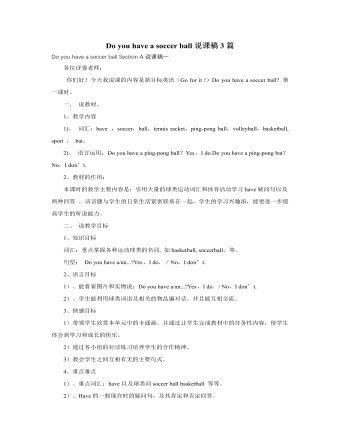
人教版新目标初中英语七年级上册Do you have a soccer ball说课稿3篇
- 页数:10页
- |大小:74.50KB
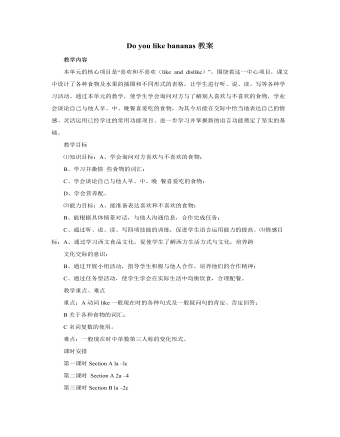
人教版新目标初中英语七年级上册Do you like bananas教案
- 页数:14页
- |大小:94.00KB

人教版新目标初中英语七年级上册Do you want to go to a movie教案
- 页数:14页
- |大小:82.50KB
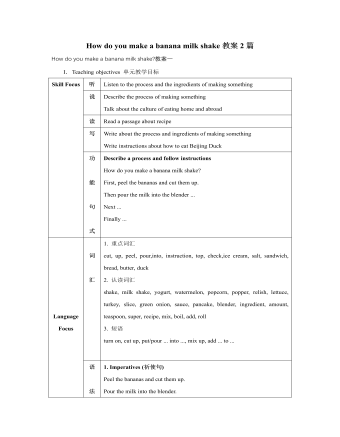
人教版新目标初中英语八年级上册How do you make a banana milk shake教案2篇
- 页数:28页
- |大小:475.00KB

人教版新目标初中英语七年级上册What time do you go to school教案
- 页数:16页
- |大小:86.50KB
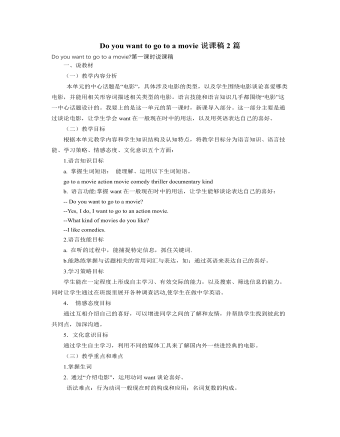
人教版新目标初中英语七年级上册Do you want to go to a movie说课稿2篇
- 页数:7页
- |大小:68.00KB
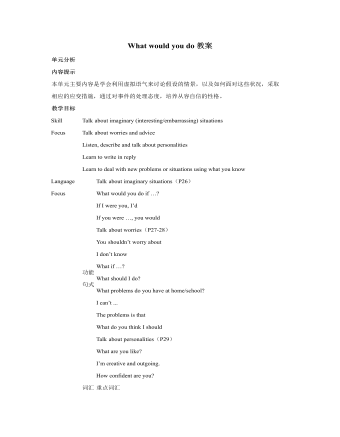
人教版新目标初中英语九年级上册What would you do教案
- 页数:20页
- |大小:593.50KB
热门课件教案
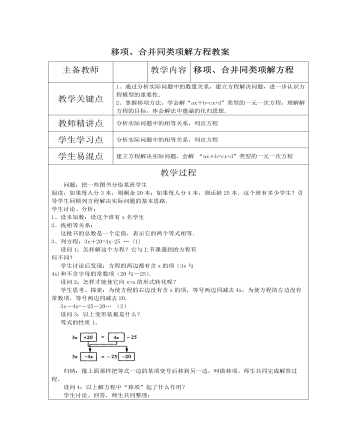
北师大初中七年级数学上册利用移项与合并同类项解一元一次方程教案2
- 页数:2页
- |大小:64.50KB
- 课件教案
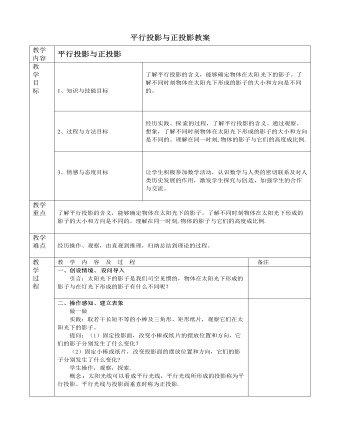
北师大初中数学九年级上册平行投影与正投影2教案
- 页数:2页
- |大小:453.50KB
- 课件教案

人教A版高中数学必修一诱导公式教学设计(1)
- 页数:9页
- |大小:180.22KB
- 课件教案
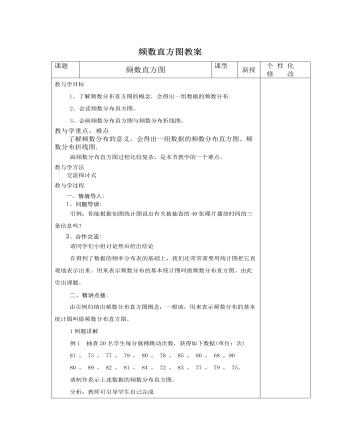
北师大初中七年级数学上册频数直方图教案2
- 页数:5页
- |大小:71.50KB
- 课件教案

北师大初中数学八年级上册用计算器开方2教案
- 页数:3页
- |大小:1009.00KB
- 课件教案
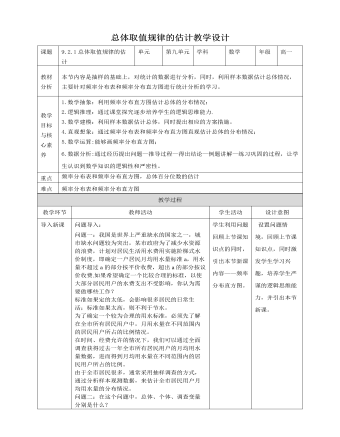
人教A版高中数学必修二总体取值规律的估计教学设计
- 页数:12页
- |大小:821.00KB
- 课件教案
今日更新

5月份主题教育工作情况总结汇报
- 页数:3页
- |大小:136.87KB

××县招商局2024年上半年工作总结
- 页数:12页
- |大小:142.54KB
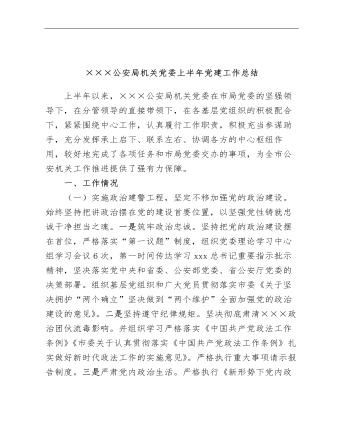
×××公安局机关党委上半年党建工作总结
- 页数:7页
- |大小:186.25KB

《2019—2024年全国党政领导班子建设规划纲要》实施情况的工作总结3800字
- 页数:6页
- |大小:29.16KB
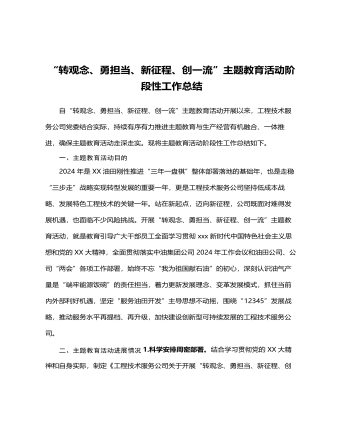
“转观念、勇担当、新征程、创一流”主题教育活动阶段性工作总结
- 页数:3页
- |大小:22.76KB

“四零”承诺服务创建工作总结
- 页数:5页
- |大小:39.83KB





